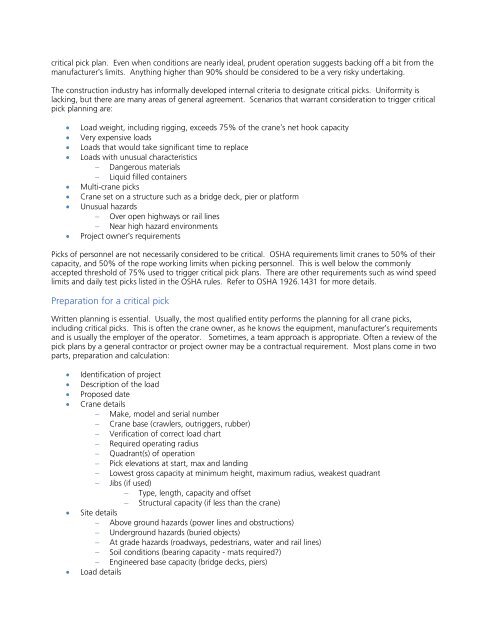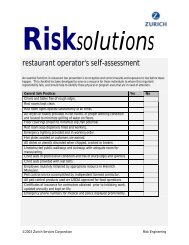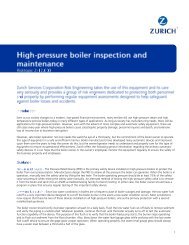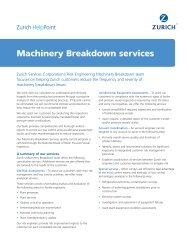Cranes - Critical picks - Risk Engineering
Cranes - Critical picks - Risk Engineering
Cranes - Critical picks - Risk Engineering
Create successful ePaper yourself
Turn your PDF publications into a flip-book with our unique Google optimized e-Paper software.
critical pick plan. Even when conditions are nearly ideal, prudent operation suggests backing off a bit from the<br />
manufacturer’s limits. Anything higher than 90% should be considered to be a very risky undertaking.<br />
The construction industry has informally developed internal criteria to designate critical <strong>picks</strong>. Uniformity is<br />
lacking, but there are many areas of general agreement. Scenarios that warrant consideration to trigger critical<br />
pick planning are:<br />
<br />
<br />
<br />
<br />
<br />
<br />
<br />
<br />
Load weight, including rigging, exceeds 75% of the crane’s net hook capacity<br />
Very expensive loads<br />
Loads that would take significant time to replace<br />
Loads with unusual characteristics<br />
Dangerous materials<br />
Liquid filled containers<br />
Multi-crane <strong>picks</strong><br />
Crane set on a structure such as a bridge deck, pier or platform<br />
Unusual hazards<br />
Over open highways or rail lines<br />
Near high hazard environments<br />
Project owner’s requirements<br />
Picks of personnel are not necessarily considered to be critical. OSHA requirements limit cranes to 50% of their<br />
capacity, and 50% of the rope working limits when picking personnel. This is well below the commonly<br />
accepted threshold of 75% used to trigger critical pick plans. There are other requirements such as wind speed<br />
limits and daily test <strong>picks</strong> listed in the OSHA rules. Refer to OSHA 1926.1431 for more details.<br />
Preparation for a critical pick<br />
Written planning is essential. Usually, the most qualified entity performs the planning for all crane <strong>picks</strong>,<br />
including critical <strong>picks</strong>. This is often the crane owner, as he knows the equipment, manufacturer’s requirements<br />
and is usually the employer of the operator. Sometimes, a team approach is appropriate. Often a review of the<br />
pick plans by a general contractor or project owner may be a contractual requirement. Most plans come in two<br />
parts, preparation and calculation:<br />
<br />
<br />
<br />
<br />
<br />
<br />
Identification of project<br />
Description of the load<br />
Proposed date<br />
Crane details<br />
Make, model and serial number<br />
Crane base (crawlers, outriggers, rubber)<br />
Verification of correct load chart<br />
Required operating radius<br />
Quadrant(s) of operation<br />
Pick elevations at start, max and landing<br />
Lowest gross capacity at minimum height, maximum radius, weakest quadrant<br />
Jibs (if used)<br />
Type, length, capacity and offset<br />
Structural capacity (if less than the crane)<br />
Site details<br />
Above ground hazards (power lines and obstructions)<br />
Underground hazards (buried objects)<br />
At grade hazards (roadways, pedestrians, water and rail lines)<br />
Soil conditions (bearing capacity - mats required?)<br />
Engineered base capacity (bridge decks, piers)<br />
Load details
















